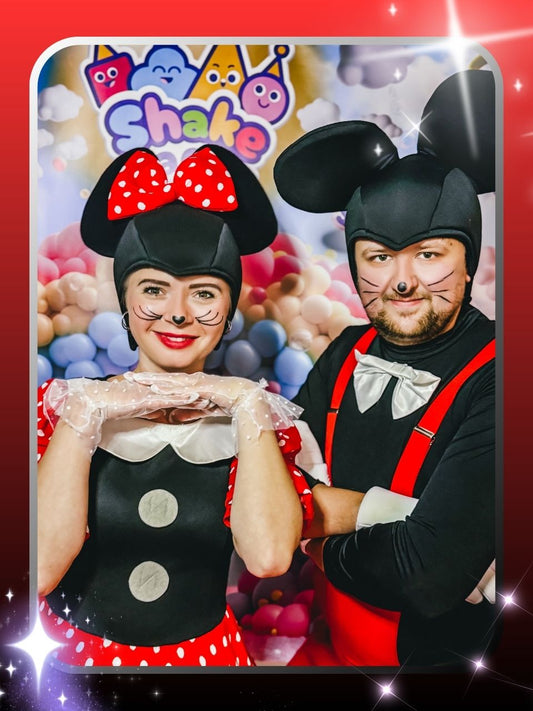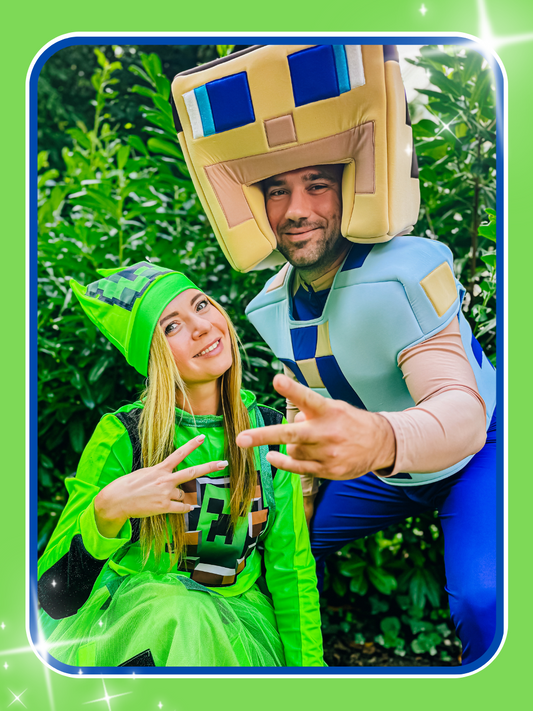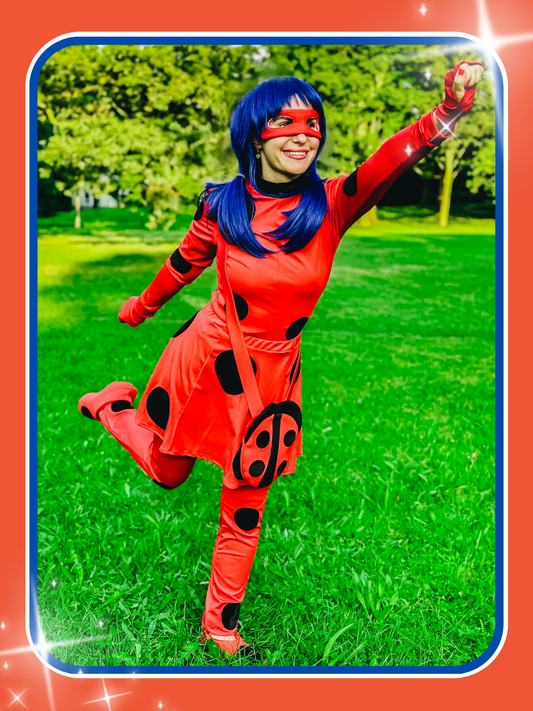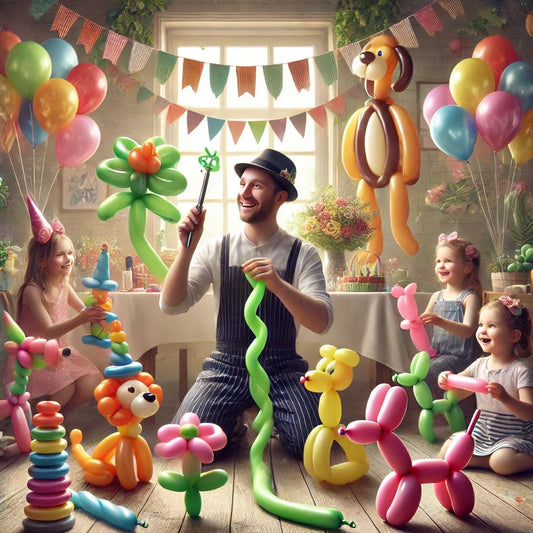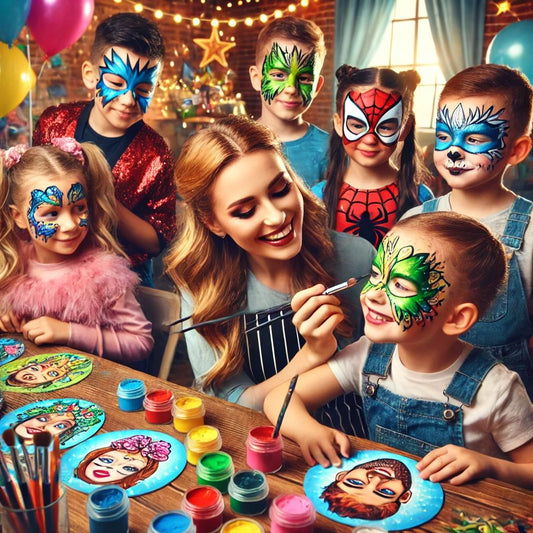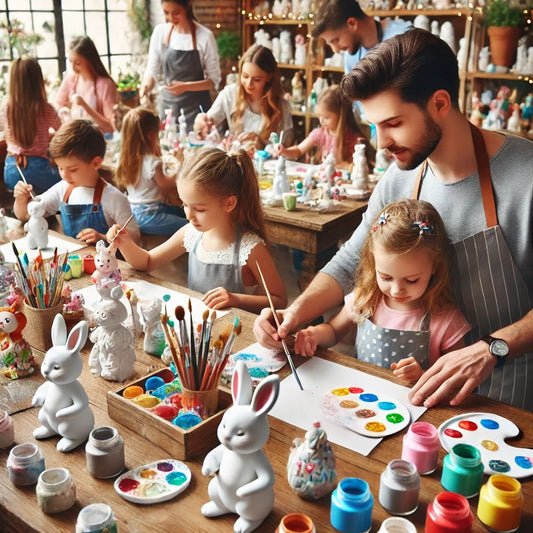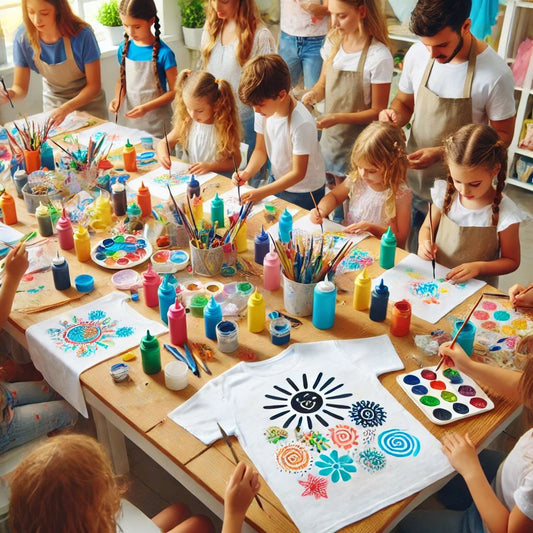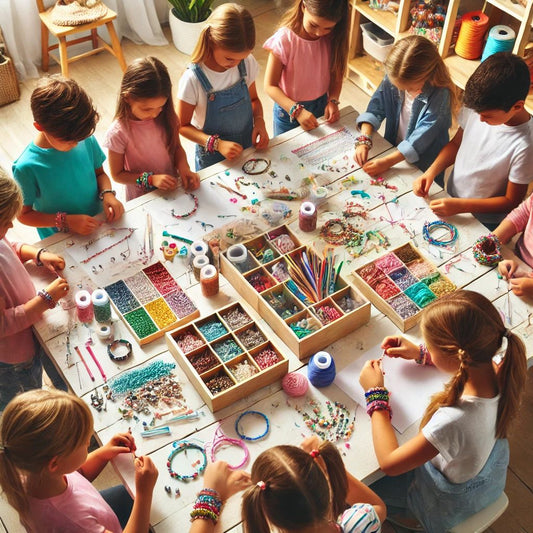
What is Santa Claus called in Germany?
Share
Santa Claus and Weihnachtsmann: Preserving Traditions During New Year's Holidays in Germany
Who is Father Frost and his analogues in other countries?
Father Frost is a traditional winter character who comes to children with gifts on New Year's Eve and embodies the symbol of winter holidays and magic. He is known in many countries under different names and in different images. For example, in Germany, his analogue is Weihnachtsmann , and in English-speaking countries - Santa Claus . Despite similar functions, each of these characters has unique features and is deeply connected with the cultural traditions of their country.
Why be interested?
Studying different New Year traditions and images of Santa Claus in different countries helps to better understand cultural differences and traditions of celebrating the New Year. The importance of such knowledge is that it allows preserving and enriching cultural heritage, promotes intercultural dialogue and helps to adapt to new countries without losing your roots. This is especially relevant for those who live in a multinational environment and want to combine different traditions in one holiday.
Who is Santa Claus in tradition?
A Brief History and Origin of the Image of Santa Claus
Father Frost is a character whose roots go back to ancient Slavic traditions and mythology. Initially, the image of Father Frost was associated with the image of the winter spirit, who personified cold and frost. Over time, his character changed - from a stern and frightening character, he turned into a kind old man who gives gifts and brings joy to children.
The modern image of Ded Moroz , as we know him now, was formed in the late 19th – early 20th centuries. His classic clothes are a long fur coat (usually red or blue), felt boots, and an invariable sack of gifts. He travels on three horses and is always accompanied by Snegurochka, his granddaughter and assistant. An important feature of Ded Moroz is his ability to fulfill New Year's wishes, which makes him a favorite character among children.
Its role in celebrating the New Year in countries with Eastern European traditions
Father Frost is a key symbol of the New Year holiday in countries with Eastern European traditions. Unlike Western countries, where Santa Claus brings gifts at Christmas, in Eastern Europe Father Frost gives gifts specifically at New Year . The appearance of Father Frost at the New Year holidays is accompanied by a special ceremony: children recite poems, sing songs, and participate in round dances around the Christmas tree.
His image symbolizes joy, magic and family unity. Santa Claus comes on New Year's Eve to congratulate everyone on the upcoming holiday, wish health and happiness, and also give gifts, which has become an integral part of the New Year celebration in these countries.
Weihnachtsmann – the German equivalent of Santa Claus
An overview of the German New Year tradition and its main character – Weihnachtsmann
In Germany, the main winter character is the Weihnachtsmann, which translates as "Christmas Man." This character embodies the spirit of Christmas and brings gifts to children on Christmas Eve, December 24. Weihnachtsmann is deeply rooted in German traditions and acts as a symbol of family comfort and well-being, uniting children and adults at the holiday table.
The origins of the Weihnachtsmann go back to Saint Nicholas , the patron saint of children and travelers. Over time, through the influence of Protestantism and cultural changes, the image of Saint Nicholas was transformed into a more secular symbol, the Weihnachtsmann. He became a national symbol of Christmas, known and loved in all corners of Germany today.
What are the differences between Weihnachtsmann and Santa Claus: appearance, manners, attributes
Although Weihnachtsmann and Father Frost have much in common, their images and traditions differ significantly:
- Appearance : Weihnachtsmann usually wears red clothes decorated with fur and wears a short fur coat. He resembles the classic Santa Claus with a hat and belt. Father Frost most often wears a long fur coat (red or blue), felt boots and a large fur hat.
- Manners : Weihnachtsmann is a calmer and more majestic character who brings presents to children at night when they are sleeping. In contrast, Santa Claus actively participates in holiday programs, talks to children, listens to poems and songs, and presents presents personally.
- Attributes : The Weihnachtsmann brings presents in a sack, often arriving with a staff or bell. Father Frost also carries a sack of presents, but is traditionally accompanied by Snegurochka, and rides on a team of three horses rather than a sleigh with reindeer, as is often depicted for the Weihnachtsmann or Santa Claus.
The Role of Weihnachtsmann in Christmas and New Year's Celebrations in Germany
The Weihnachtsmann plays a key role in the German Christmas celebrations. He appears on December 24, Christmas Eve, and brings presents under the tree. Children write letters to the Weihnachtsmann in advance, hoping for their wishes to come true. The presents are usually found in the morning, and the Weihnachtsmann himself rarely appears in person at the celebration - his role is more to discreetly leave the presents.
Christmas in Germany is a family holiday, celebrated in a close circle. The Weihnachtsmann symbolizes the warmth and magic of this time of year, combining in himself not only the role of a gift-giver, but also an important cultural figure who preserves the spirit of the holiday. Unlike Santa Claus, who is more associated with the New Year, the Weihnachtsmann personifies the Christmas miracle and the spiritual content of the holiday.
Santa Claus vs. Weihnachtsmann: Is There a Difference?
How Santa Claus is Perceived in Germany, the Influence of American Culture
Santa Claus is a world-famous Christmas character, especially popularized by American culture, advertising, and movies. In Germany, as in many other countries, Santa Claus's influence increased significantly in the 20th century, especially after World War II, when American pop culture began to spread rapidly across Europe.
Santa Claus is associated with the classic image of a kindly old man in a red coat who lives at the North Pole and arrives on a sleigh with reindeer to distribute presents. His images are often found on Christmas decorations, cards and commercials. German children know Santa Claus, especially from Western films and cartoons, but traditionally in Germany the Weihnachtsmann has retained a more significant role as the main character of Christmas.
Santa Claus is often perceived as a more commercial and mass image, while Weihnachtsmann has deeper roots in German culture and tradition. However, thanks to cultural exchange and globalization, both characters can coexist, and in some cases they are even combined into one image.
Comparison of Weihnachtsmann and Santa Claus: what do they have in common and how are they different?
What is common:
- Role in the holiday : Both Weihnachtsmann and Santa Claus perform the function of giving Christmas gifts. Both characters bring joy to children and are integral symbols of the holiday.
- Date of celebration : Both characters are associated with Christmas and usually bring gifts on the eve of the holiday, December 24th or 25th.
- External attributes: Both wear red fur coats, fur decorations and have long white beards. Their bags always contain gifts for children.
How are they different:
- Origin : Santa Claus is derived from Saint Nicholas, although his modern image was formed in America, while Weihnachtsmann also has a connection with Saint Nicholas, but his image in Germany is more secular and separated from his religious roots.
- Method of delivery of gifts : Santa Claus arrives on a sleigh pulled by reindeer and descends into houses through the chimney. Weihnachtsmann does not have a strict "transport", and his appearance in houses is often symbolic - he leaves gifts under the tree, and children find them on the morning of December 25.
- Geographical location : Santa Claus lives at the North Pole, where he works with elves to prepare gifts for children around the world. Weihnachtsmann does not have such a strict "residence" - his origins are more often associated with local traditions.
- Commercial Impact: The image of Santa Claus has been heavily commercialized and used in advertising since the early 20th century, especially in campaigns for brands such as Coca-Cola. The Weihnachtsmann, despite his growing popularity, retains a more modest and traditional role in German culture.
- Cultural significance : Weihnachtsmann is more closely associated with local and historical traditions in Germany, while Santa Claus has a more global and universal image, known throughout the world.
Thus, Weihnachtsmann and Santa Claus , although they perform similar functions, have different cultural roots and symbolic meanings. In Germany, Santa Claus is more often perceived as a symbol of global Christmas, while Weihnachtsmann remains an important part of local tradition, more closely linked to national and family customs.
The popularity of Father Frost among Russian-speaking residents of Germany
How Russian-speaking families in Germany maintain traditions and continue to invite Santa Claus
Russian-speaking families living in Germany try to preserve their New Year traditions, in which Father Frost plays a key role. For many families, New Year remains the main winter holiday, as it was in the countries where they come from. Preserving the tradition of inviting Father Frost helps to maintain a connection with cultural roots, pass on Eastern European customs to children and create a unique holiday atmosphere.
To maintain this tradition, many Russian-speaking families turn to the services of animators who play the role of Father Frost and Snow Maiden. In Germany, there are special agencies offering such services for celebrating the New Year. Usually, animators come to the home or to children's matinees, conduct a festive program, play with the children and give gifts. This allows children born in Germany to come into contact with the culture of their parents and immerse themselves in the atmosphere of the New Year's miracle, characteristic of Eastern European traditions.
In addition, Russian-speaking communities organize their own New Year's events, where Ded Moroz and Snegurochka are always present. These celebrations are held in schools, cultural centers, and even at public events, where children can meet Ded Moroz, recite poems to him, and receive gifts. Thus, for many families, Ded Moroz becomes an integral part of the New Year's celebration, even if they live in a country where the Weihnachtsmann tradition dominates.
When to choose Santa Claus instead of Weihnachtsmann: cultural and family traditions
Russian-speaking residents of Germany often choose Santa Claus instead of Weihnachtsmann for the following reasons :
- Cultural roots and family traditions : For many Russian-speaking families, inviting Ded Moroz is not only a way to maintain a connection with native traditions, but also to pass them on to new generations. Parents want their children, even living in Germany, to know and understand who Ded Moroz is, and for the New Year to remain an important part of family traditions. Ded Moroz, with his unique role, differs from Weihnachtsmann or Santa Claus in that his visit is often accompanied by active interaction with children: reading poems, singing songs, playing games and presenting gifts personally from the hands of the character.
- Focus on New Year, not Christmas : In Eastern European tradition, New Year, not Christmas, is the main winter holiday. Unlike Weihnachtsmann, who brings gifts at Christmas, Father Frost is associated specifically with New Year's celebrations. For Russian-speaking families, New Year is not only about festive food and gifts, but also about family unity, the expectation of magic, and the fulfillment of wishes.
- Traditions of collective celebration: In Eastern European countries, family and corporate events with the invitation of Santa Claus are popular, where he plays the role of the host of the holiday. Unlike the more "invisible" Weihnachtsmann, who comes at night and leaves gifts under the tree, Santa Claus appears at the holiday in person, interacts with guests, involves them in games and creates a festive atmosphere.
- Personal interaction with children : In the Eastern European tradition, Father Frost actively interacts with children: he listens to poems, songs, participates in games and dances around the Christmas tree. For many Russian-speaking families, it is important for children to take part in these traditional activities. In contrast, Weihnachtsmann in Germany is often associated with a more symbolic image, and his interaction with children may be less active.
- Preservation of language and culture: In families where the Russian language is preserved, the tradition of inviting Father Frost helps to raise bilingual children. Events with Father Frost are held in Russian, which helps to maintain the language environment and helps children better understand the cultural characteristics of their parents.
Thus, the choice of Santa Claus for New Year's celebrations in Russian-speaking families in Germany is explained by deep cultural and family traditions. This character helps to maintain a connection with native customs and to convey to children the magic of the New Year as parents know it.
The Place of Santa Claus in Modern German New Year's Celebrations
Integrating Eastern European Traditions into German Culture: How Russian-Speaking Communities Celebrate
Russian-speaking communities in Germany successfully integrate Eastern European New Year traditions into the local culture, creating a unique symbiosis of two holiday styles. New Year plays a central role in Eastern European traditions, and Ded Moroz becomes a symbol of this holiday that unites families, communities and even business teams.
Russian-speaking families and communities do not abandon German Christmas traditions, such as meetings with Weihnachtsmann or visiting Christmas markets, but they also bring their own cultural elements - meetings with Santa Claus, family feasts on New Year's Eve and traditional games around the Christmas tree. In this form, many families celebrate two key winter holidays at once: Christmas with Weihnachtsmann and New Year with Santa Claus, creating a double celebration that unites cultures.
In addition, Russian-speaking communities organize their own cultural events, which include performances by Father Frost and Snow Maiden. In such cases, the holiday can be accompanied by folk songs, dances, games, competitions and theatrical performances that introduce children to Eastern European traditions and convey a sense of New Year's magic.
Examples of events where you can meet Santa Claus: New Year's fairs, private celebrations, corporate events
- Private family celebrations
- In Russian-speaking families living in Germany, one of the most popular ways to celebrate the New Year is private events with an invitation from Father Frost. Such celebrations take place in a home atmosphere, where Father Frost comes to the house, talks to the children, listens to their poems and songs, and then gives them gifts. These events are especially important for preserving cultural traditions and creating a New Year's atmosphere, as parents remember it from their childhood.
- New Year's events in Russian-language kindergartens and schools
- Many Russian-speaking children attending kindergartens or schools regularly participate in festive events where Father Frost is present. These New Year's parties include traditional round dances around the Christmas tree, games and theatrical performances. Father Frost and Snegurochka are the constant characters of such parties, creating an atmosphere of magic and joy.
- Corporate events
- In Germany, many companies with Russian-speaking employees organize corporate New Year's events, to which Father Frost is invited. His role is to congratulate employees, conduct competitions and interactive games, which adds a special atmosphere of warmth and coziness to the New Year's corporate party. These events often include elements of both Russian and German traditions, which makes the holiday culturally diverse.
- Cultural centers and clubs
- In cultural centers and clubs where Russian-speaking communities gather, Ded Moroz performs at New Year concerts, holiday fairs and themed events. In such cases, Ded Moroz is not just a character who gives gifts, but also a program host who organizes games and competitions for children and adults. These holidays help not only to preserve cultural roots, but also to introduce children to the traditions of their parents.
- New Year fairs and festivals
- In some German cities, you can meet not only Weihnachtsmann but also Father Frost at New Year's fairs. This happens in regions where a large number of Russian-speaking families live, or in places organized specifically for multicultural festivals. At such events, Father Frost greets children, organizes mini-competitions and gives out small gifts. Such integrations create cultural diversity and allow local residents to get to know the traditions of Eastern European countries better.
- Activities in multicultural families
- In families where the spouses come from different cultures (for example, one of them is Russian-speaking and the other is German), both Christmas and New Year traditions are often combined. Santa Claus may come to the party after the children have already met Weihnachtsmann at Christmas, which creates a unique synthesis of traditions that unites both cultures.
Father Frost and Weihnachtsmann as symbols of the holiday and cultural diversity
Father Frost and Weihnachtsmann are two important symbols of the winter holidays, each reflecting the cultural traditions and history of their country. Weihnachtsmann represents German Christmas, its family values and traditions, while Father Frost is associated with the Eastern European New Year, where he plays a key role in creating a festive atmosphere, especially among Russian-speaking families in Germany.
Both characters coexist well in Germany's multicultural environment. In families where German and Eastern European traditions combine, Weihnachtsmann brings gifts at Christmas, and Santa Claus at New Year. This creates a unique mix of cultures and traditions, allowing people to celebrate two winter holidays with different, but equally meaningful characters.
How to preserve traditions and make holidays in Germany brighter with the help of different characters
To preserve cultural traditions and make holidays more vibrant and diverse, it is important:
Combine Traditions: Don't be afraid to integrate both traditions into one holiday. This could mean creating family events where the Weihnachtsmann is present at Christmas and Santa Claus is present at New Year. This way, you'll preserve both traditions and give children the opportunity to enjoy cultural diversity.
Celebrate in the community : Russian-speaking families can participate in events organized by communities and cultural centers where Ded Moroz remains an integral part of the holiday. Such events strengthen cultural ties and help pass on traditions to future generations.
Inviting characters to private and corporate events: Integrating Santa Claus and Weihnachtsmann into family and corporate events will add New Year's magic and highlight cultural diversity. This can be either a private event with Santa Claus or a New Year's corporate party where both characters will be presented.
Organizing joint events : Creating multicultural festivals and fairs that combine elements of both Christmas with Weihnachtsmann and New Year with Santa Claus will allow not only Russian-speaking families, but also residents of Germany to become more familiar with the cultural diversity of the winter holidays.
Celebrating with Santa Claus and Weihnachtsmann not only preserves cultural traditions, but also makes the winter holidays in Germany more vibrant, rich and memorable.

